
(7:30 am at the fishing port of Les Sables d'Olonne, June 13, 2000)
WVU-V!
Hardly to bed, and early to rise...
June 13, 2000

(7:30 am at the fishing port of Les Sables d'Olonne,
June 13, 2000)
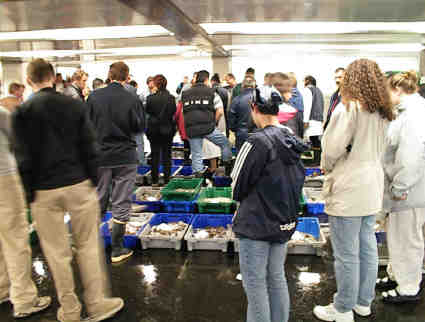 |
In the month of June the sun sets here in Les Sables
sometime just after 10pm. This is a bit disconcerting for many of us
from across the Atlantic and from latitudes further south. We tend
to judge the hour by the sunlight, which seems bright here until quite
late in the evening. All this leads to our getting to sleep a bit
later than might otherwise be our nature.
Nevertheless, if we are to catch a glimpse of the heart of the economy of this town we have to be at the fishing port by 7:30 am. Even then we will see only the end of a day that began here several hours earlier. To the left you see our Vendéens as they witness the "criée" or the "shout". This auction is among the last of its kind in Europe, but it works well in bringing buyers and fishermen to agreement on prices for the catch that makes this the seventh largest fishing port in France, a country that has a love for the sea and its produce that is equaled only in countries like Japan. |
| Here our guide Alain shows us one of the prize catches for fisher here, the famous "langouste". The langouste is similar to our Maine lobster, but without the larger pincers. It is also much more highly priced in these auctions. |
|
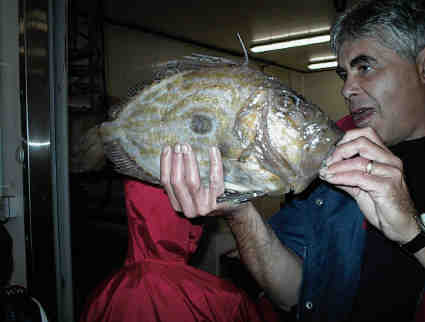 |
The Saint Pierre, or Saint Peter, here has a spot on its side that convinces some predators that it is actually the head of a much greater fish. When attacked from behind the spines on the fins serve as final an generally convincing line of defense. What people here are convinced of is the quality of the dishes that this fish can provide. |
| After the fishing port we take a stroll through the shipping docks, a major manufacturing and assembly center where ships from all around this part of the Atlantic are made, outfitted, or repaired. | 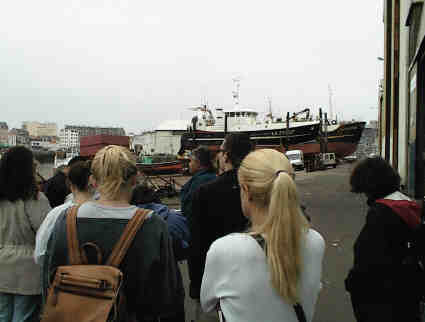 |
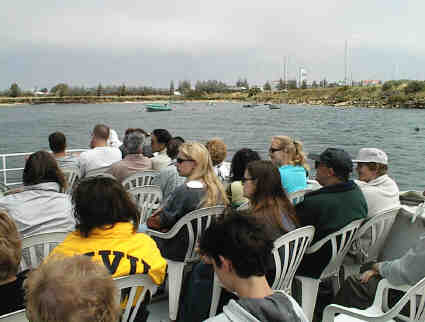 |
Our visit to the ports ends around 10:00 am, giving us a bit of the morning for errands before a break for lunch. At 2:30 pm we board a skiff that takes us into the marshes that separate Les Sables from the mainland. In the days of the Roman Empire in fact the main port of this area was at Olonne, which today is several kilometers inland from today's ports. The Romans were the first to exploit these marshes for the commercial production of sea salt. From prehistory to the beginning salt was the primary means preserving food for transport or for consumption in the winter months. It was such an important commodity that it was called "white gold" and was used to pay soldiers of the Roman army and others dealing with the Empire. This usage gave rise to our modern word "salary", or "salt pay". |
| Here Jennifer Martin and Brian Hill look out over the clay lined evaporation vats whose design dates back to the Middle Ages. | 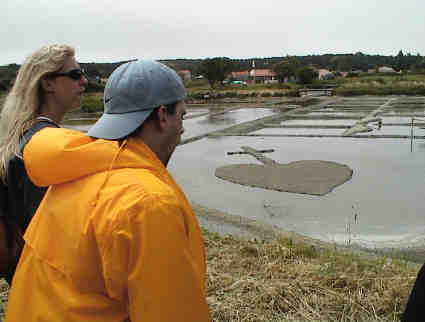 |
 |
Here several of the Vendéens take a rest outside a
replica of an ancient Gaulish or Celtic hut. The Gauls developed the
methods of salt production that would inspire the Romans in their
exploitation of the sun, the wind, and the sea of old Vendée.
We'll see more evidence of the ancient, medieval, and modern wealth of this part of the world in our visit to the island of Noirmoutier on Thursday. |
Stay tuned to WVU-V!
Back to the Calendar
Comments to: mlasting@wvu.edu